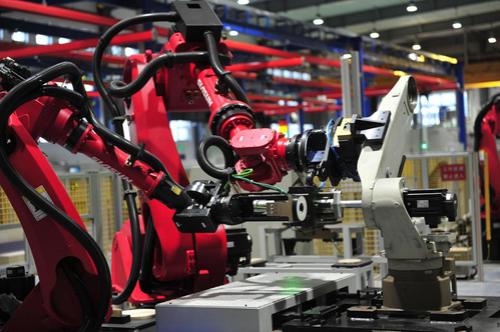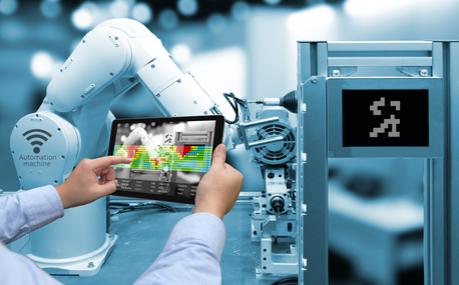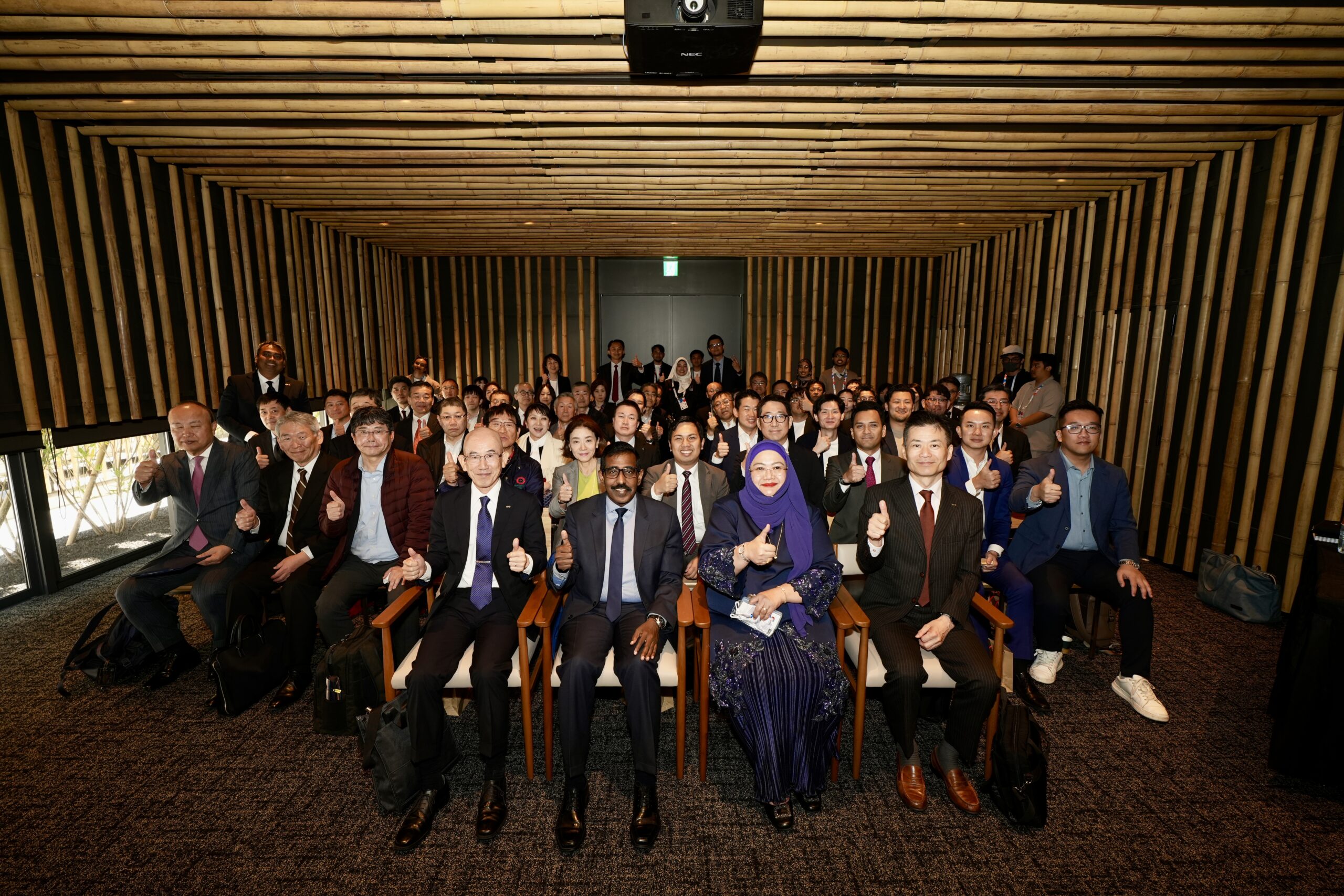
This site
is mobile
responsive
The manufacturing industry is no stranger to misconceptions and buzzwords. Collaborative automation, Industry 4.0, artificial intelligence, blockchain – the real reason we allow ourselves to spin in circles on these topics is because we’re inherently hopeful and practical people: we want to build better and believe there is a path to doing so, if only we could find the way.
As part of my series to uncover what leaders in the manufacturing space are actually doing to build better, I sat down with someone at the bleeding edge of evaluating new technologies: Juan L. Aparicio Ojea, head of the research group for advanced manufacturing automation at Siemens. Aparicio Ojea’s role grants him unique insight into the latest research across universities, startups, and government agencies. Access to so many different types of technologies that are all working to provide value in one way or another has enabled him to create a simple blueprint for the key requirements of an Industry 4.0 system.
He acknowledges that we’re far from seeing completed Industry 4.0 systems in practice, but that there are two steps every manufacturing leader can and should be taking today.
Interoperability: One solution from many parts
Much of the challenge of bringing new technologies to the factory floor is in the interfaces between them. Aparicio Ojea asserted, “Being able to interoperate machines from different vendors is key.”
These connections will allow for the flow of previously underutilised data, enabling faster integration and time to value.
There are two schools of thought on this issue. Some, like Aparicio Ojea believe that industry standardisations laid out by industrial consortiums, which includes frameworks for OPC UA and DDS, will be
key. Others, like Andrew Scheuermann, CEO of Arch Systems, believe that the industry cannot wait for the long cycle of old equipment to be replaced. Legacy equipment and new-fangled collaborative robots already have to work together, so Arch Systems, who counts top tier electronics manufacturer’s among their customers, has built out an extensive library of software and hardware retrofit integrations where manufacturers can expedite a path towards interoperability with what is on their floors today, while leveraging modern standards for their new equipment.

SHENYANG, CHINA: An automated robot production line is seen at a digital workshop of SIASUN Robot & Automation Co., Ltd., which is belonging to Chinese Academy of Science (CAS), on August 27, 2019 in Shenyang, Liaoning Province of China.
Modularity: One piece that can fit in many places
The second requirement is modularity, or as Aparicio Ojea clarifies, “not having a monolithic approach to manufacturing.” An easy-tosee example of modularity on an electronics factory floor is the SMA (surface mount assembly) line. Instead of one huge machine that can make only one kind of PCB, there are modular machines for each step in the process: solder paste deposition, pick and place machines, reflow ovens, and
inspection. But the SMA process has been around fordecades, so what does it mean in the modern context? I believe it means that the time for custom-built, single-purpose machines is coming to an end, to be replaced by generalised technologies that can be applied to a much wider variety of products and problems. Universal Robots is tackling this by creating easy-toprogram robot arms that can be reprogrammed to different functionality when the program is over, enabling the technology to be viable for products with short life cycles (like consumer electronics).

Digital Twin: Model what matters
Aparicio Ojea believes the third element of the blueprint is the creation and use of a digital twin, or simulation, of factory processes. I’ll be honest, “digital twin” is a buzzword that has always made my head spin and sent up my scepticism antennae. Here’s the point: if you want better outputs from your process (such as higher yields or higher throughput), as engineers we would measure the inputs (such as individual machine parameters) and to try to use statistics to figure out which variables matter. If you can find a mathematical correlation between the inputs and the outputs, you may be able to “turn the knobs” on the input parameters to get the outputs you need. A digital twin is the concept of doing that at a much larger scale, where the goal is to replicate every single process for a holistic model of the factory.
While it’s possible there are successful implementations of true digital twins out in the wilds of the manufacturing world, in general, this is viewed as an aspirational concept. As Aparicio Ojea rationalised, “It is not a greenfield, it is a brownfield” – meaning that most factories already exist and are filled with both legacy equipment and manual processes that are difficult to digitalise. While digital twins might be obtainable for highly automated bottling plants, it feels like fantasy for electronics assembly, which still has hundreds of human hands on the line. In those cases, leaders should focus on wrapping their arms around the data they can get at the highest possible resolution, if not from the process, then from the products themselves. Engineers can use this data to create these correlations the old fashioned way: with experiments, spreadsheets, and statistics.
Flexibility: Pieces that can adapt
Arguably the most exciting element of the blueprint is flexibility. This element is all about reducing waste – not scrap waste, but equipment waste. Single-purpose machines are not easily repurposed and yet are how short life cycle production lines have been able to automate to date. How do we create more flexibility in the production process and the machines we use? AI, computer vision, and robotics can be combined to enable machines that are both more adaptable to variation, and more adaptable from product to product. A quick example is in the quality control process. The industry is moving away from the expensive “one-issue, onecamera” model towards cameras systems that can program themselves to find anomalies more broadly during an inspection – allowing greater inspection coverage than humans or traditional and more reliable quality control. The combination of adaptability, automation, and access to data is a triple threat that will unlock the lion’s share of the potential of Industry 4.0.
Where to start?
How does one adopt Industry 4.0 technologies and embody these smart manufacturing principles? Aparicio Ojea recommends investing in two key areas: digitalisation and strategic partnerships. Without digitalisation there will be no data foundation, a requirement for a wide array of initiatives. Simply decreasing paper processes represents a first step that many can take. When it comes time to adopt innovative technologies, Aparicio Ojea recommends, “viewing vendors as strategic partners and having a cocreation mentality. Partnering with a startup, automation vendor, or university and working together to solve a problem that has a real KPI and a clear goal merits investment now.
”Aparicio Ojea specialises in these types of strategic partnerships for Siemens Corporate Technology. He views partnerships as opportunities for cutting edge technology to solve larger problems that have concrete ROI for big businesses. For instance, Siemens Corporate Technology has partnered with Sewbo, a startup tackling automated garment production by incorporating a solution that stiffens fabrics, in an ARM-funded project. By reframing the problem of movement and variation, Sewbo (in conjunction with Siemens, UC Berkeley, and Bluewater Defense) has the opportunity to overhaul the status quo manual practices of an entire industry, whose size is similar to that of automotive. Another example is Instrumental, which enables manufacturers with manual or automated processes both to aggregate visual data and line metrics and to leverage flexible, AI-powered tools to discover defects in real-time. Motorola Mobility partners with Instrumental for every smartphone they design, to both speed up ramp of new products and to increase yields while preventing quality escapes.
With so much expensive groundwork, is Industry 4.0 worth all of the buzz? Aparicio Ojea views it as an “evolution, rather than a revolution.” New technologies absolutely merit investment, but he advises that leaders to stick to technologies that make their processes better today and lay the foundation for the future. In order to stay competitive in this ever changing international landscape, it will be technology investments today that differentiate the winners and losers tomorrow.
Writer:
Ms. Anna-Katrina Shedletsky
CEO of Instrumental
www.instrumental.com
Explore other related content to further
explore MIDA’s insights.

